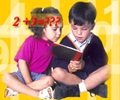
Some findings in the field of collaborative memory research have been counter intuitive. For one, collaboration can hurt memory.
The collaborative groups remembered more items than any single person would have done alone. But they also remembered fewer than the nominal groups did by totalling the efforts of its solitary workers.
In other words, the collaborators' whole was less than the sum of its parts.
This so-called "collaborative inhibition" affects recall for all sorts of things, from word pairs to emotionally laden events; it affects strangers or spouses, children or adults. It is, in scientific lingo, "robust".
What explains this? One dynamic is "retrieval disruption": Each person remembers in his or her own way, and compelled to listen to others, can't use those strategies effectively.
Advertisement
On the other hand, collaborative learning helps, which is why people hold it in high esteem.
Advertisement
People can also correct each other's erroneous memories, a process Rajaram and her colleagues call "error pruning". Or they can "cross-cue"-bring up recollections that jog memories others have forgotten.
Rajaram's work involves small groups in the controlled laboratory environment. Yet, like others in her field, she believes it can inform the understanding of the wider "networks in which social memory phenomena are occurring"-classrooms, institutions, communities, subcultures, or nations.
"If a small group can reshape memories, we see how individuals come to hold certain viewpoints or perspectives," she said.
"That can serve as a model for how collective identities and histories are shaped," she stated.
The findings have been published in Current Directions in Psychological Science, a journal of the Association for Psychological Science.
Source-ANI









